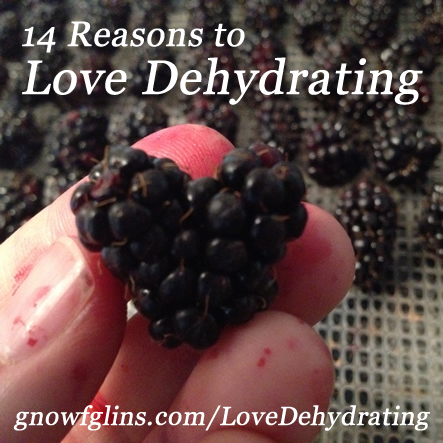
Got a dehydrator just sitting there? I’m here to convince you to put it to use. 🙂
Or… if you’re thinking about getting one but want to be sure it’s worth it, I can help with that, too.
Let me share why I *heart* dehydrating…
1. Lightweight and portable
Dehydrated foods are easy to pack around because drying removes the heavy water content. Though the amount varies from food to food, consider apples — 2 pounds of fresh apples becomes 4 ounces when dried. That’s a big difference in a backpack when you’re out hiking!
Home-canned foods are not only heavier, but the glass jars make packing around more difficult. If you’re on the move or want to be ready to move, drying is the way to go.
2. Take up less space
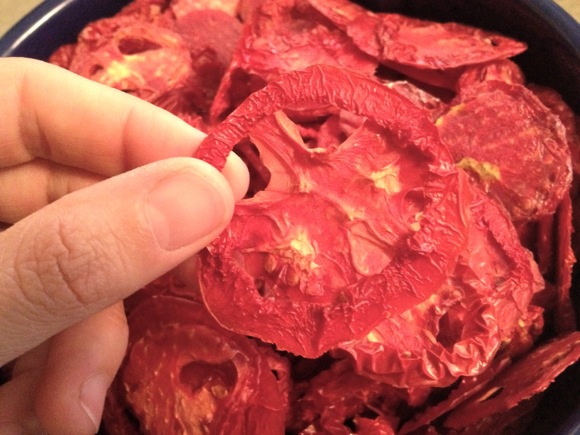
Because of the water removal through drying, dehydrated foods shrink up considerably. You need much less storage space for dried foods.
3. Preserves nutrition

If you use a low enough temperature when drying, the foods’ naturally present nutrition remains. Specifically, vitamins and enzymes. This is not the case with high-heat canning or higher-heat dehydrating.
4. Stores at room temperature
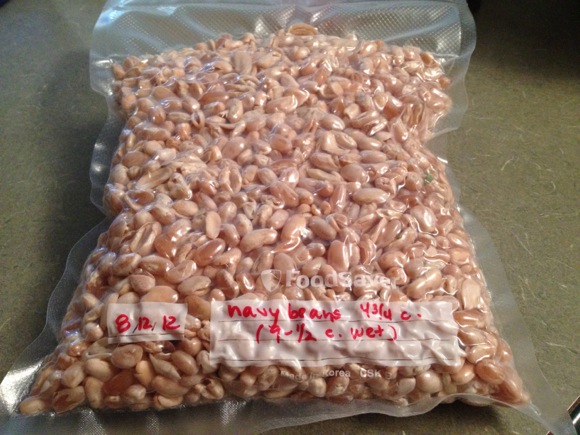
Dehydrated foods (stored in air-tight or vacuum-sealed containers) keep well at room temperature for at least a year. No cellar, freezer, or refrigerator required. Gotta love that.
5. Preserves the harvest
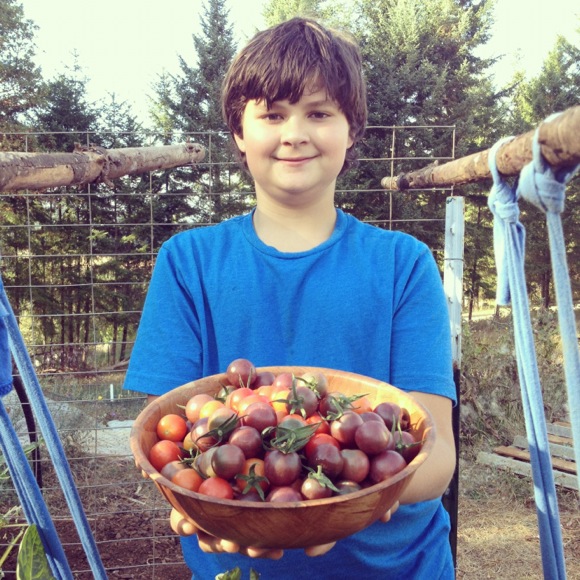
Vegetables, fruits, herbs, eggs, dairy, meats, you name it… save them beyond their season through drying. Then eat them year-round!
6. It’s traditional
Drying is arguably the most traditional food preservation method, with fermentation coming in second. Traditional cultures learned quickly that removing moisture from food keeps in indefinitely. How many stories have you read about native peoples collecting and drying wild berries? What about smoking meats over a fire? Yep, it’s been around awhile — because it works.
7. Delicious!
You can dry all kinds of foods and food groups — veggies, fruits, herbs, broth, meats, beans, grains, nuts/seeds, dairy, and eggs! Most people agree they’re delicious (especially dried fruits, of course 😉 ). Some are eaten dried, like fruit leather or dried apples, while some foods are best reconstituted before eating (like cooked and dried beans for a stew).
Did you know that the popular prepper emergency dried food kits can be duplicated at home by combining homemade dried foods to create main dishes, side dishes, soups, stews, trail foods, desserts, and more. What’s even better is that your homemade dried foods are healthier because you’re going to use whole grains and omit yuckies like genetically-modified soy, preservatives, and sulphur. Right? Right! (Good answer.)
8. Can be fermented as-needed
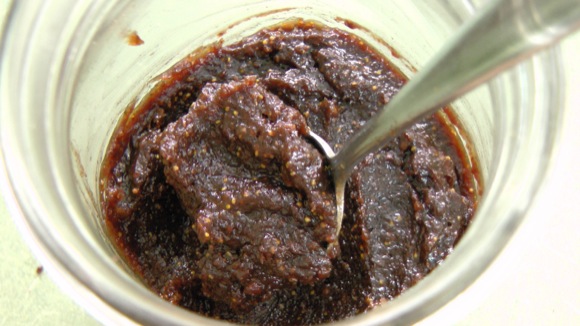
Because modern homes don’t often have cellars or extensive non-electric cool storage, lots of people (currently including me) don’t have the option to ferment our seasonal bounty. However, many dried foods can be fermented on an as-needed basis. So you get the nutrition of fermentation, but you don’t need the cold storage — the best of both worlds.
9. Preserve mother cultures

Through dehydrating, you can preserve your beloved mother cultures — like sourdough starter and kefir grains (pictured). Cold storage and vacuum-sealing is desirable for long-term results.
10. Save $
Comparing electricity costs of freezing, canning, and dehydrating? Dehydrating wins.
If you live in a sunny area and can rig your own solar dehydrator, you would have no electricity costs whatsoever.
11. Easier and quicker than canning
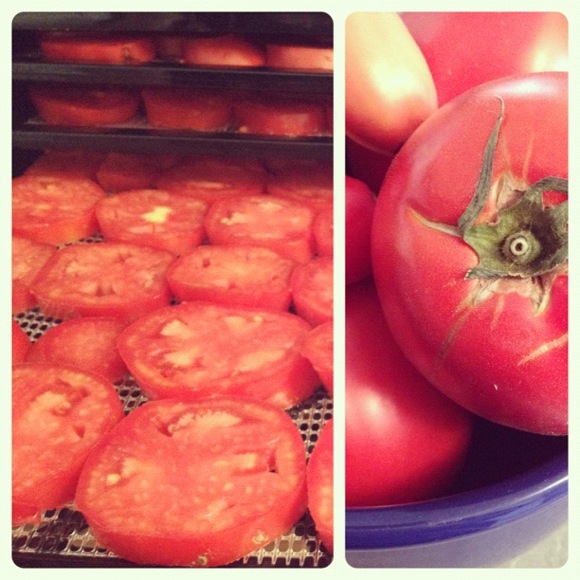
Here’s the basic procedure of dehydrating: slice food, lay it out on a tray, turn on the dehydrator, flip the pieces over as needed… pretty soon your foods are dry. How hard was that?
Canning involves sterilizing jars, cooking and stirring at a hot stove, … stuff I’d rather avoid.
Plus, remember that canned foods aren’t as nutritious, take up more space, don’t pack around so well, and require more electricity.
12. Ideal for survival and prepping
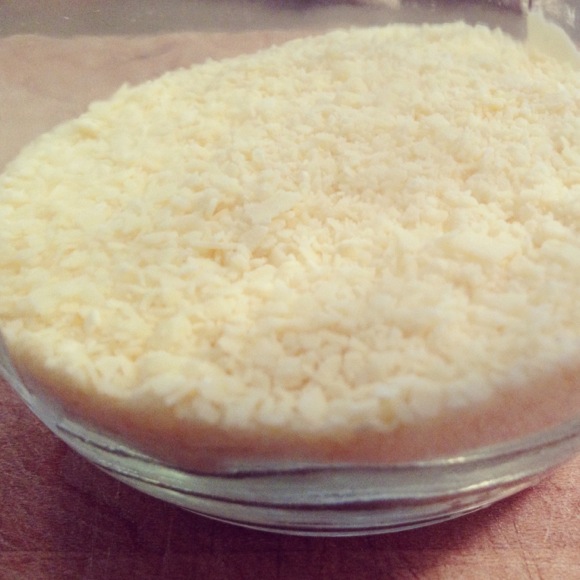
Lightweight, portable, little space, healthy, cheap, easy… need I say more? (Pictured: dehydrated powdered yogurt)
13. Kid-friendly
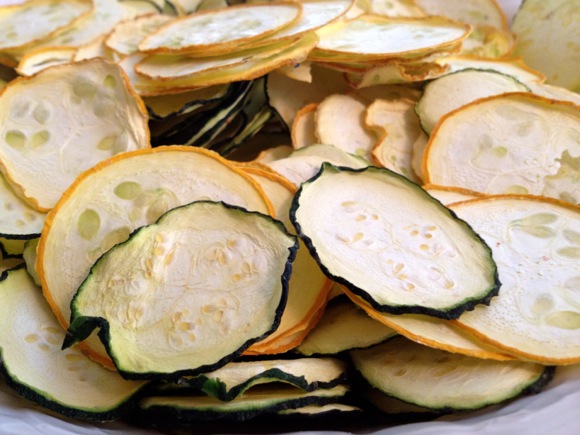
Though not everyone will care for everything dried, I think we all can agree that kids love munching on zucchini or apple “chips” or fruit leather!
14. Great resources
You don’t have to go it alone! Inspiration abounds!
Two of my favorites sites are: Backpacking Chef and Dehydrating Way Beyond Jerky FB group.
My favorite books are Preserve it Naturally! (comes with certain Excalibur dehydrators) and Mary Bell’s Complete Dehydrator Cookbook.
You will also be happy to know that I’m teaching a dehydrating class. You will discover how to dehydrate all kinds of foods, and of course, you can rest assured knowing that what I teach favors traditional and nutrient-dense foods/techniques.
To take this class, become a member and you get access to all our other classes, too!
Here’s a video to tell you all about the new class!
Please share: why do you love dehydrating?
We only recommend products and services we wholeheartedly endorse. This post may contain special links through which we earn a small commission if you make a purchase (though your price is the same).

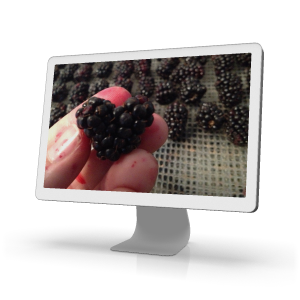

Oh, my, what a wonderful post today–cannot wait! Love the theme music too, Wardeh! Dehydrating is a lot of fun (as you say) and if and when I ever get an Excaliber 9-tray it will be even more exciting. Right now I am using my 2 round plastic thrift store dehydrators (without thermostats) so I am probably loosing some nutritional value because of the unregulated heat. Have a wonderful day! Love, Mom
I can’t wait for your class so I can learn how to do this right. I just bought a new dehydrator, and have used it a few times … apples, leeks, zucchini … and am about to do some pears.
I am saving for this, my son and I are going to have a blast with it.
What perfect timing! My daughter told me I HAD to come to your blog. My husband is adamant that we NEED a dehydrator NOW! Well Dear, a few things like Christmas presents need to be finished first? We no longer have a book store in town so we’ll just have to make a trip to Barnes & Noble to find Mary Bell’s book. (My daugher also says I NEED that too!)
Thanks, Cheryl
Cheryl…my Excaliber dehydrator came with Mary Bell’s book so check online to see what you get with yours. I love mine and use it a lot. Mostly for gluten-free “raw” crackers, desserts, and every thing in between. Love this blog.
I want to know how to cook with dehydrated foods. I have been using mine almost constantly (Nestco brand) for two years. Mainly nuts and sprouted flours. Of course apple slices IF i can keep my seven kids out of them long enough. They work just fine, BUT I want to be done faster, and bigger, and it would just looks serious on the counter. I do hope to make yogurt in one too.
thanks for this post! i’ve been meaning to get my excalibur back into circulation, and this is sweet encouragement! 🙂
I’m curious if you know whether dehydrating fermented foods on low temps will preserve the probiotic benefits of fermenting?
Hi Abby,
Keeping the temps under 115 degrees F does help preserve the probiotic benefits. But the results may be iffy depending on what is being dehydrated. You may have to experiment a bit.
Millie
Traditional Cooking School
Hi! I was wondering if I can dehydrate raw milk, or do I have to pasteurize? Google search says I have to pasteurize, but I was hoping there was a way around it!
Hi, Micaela: I don’t know why you couldn’t dehydrate raw milk without pasteurizing it. I would give it a try! —Sonya, TCS Customer Success Team